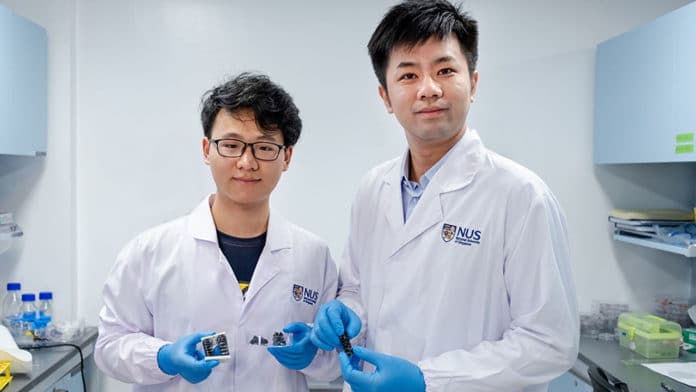Soft robotics has been a promising field of research for years, often made from soft materials such as paper, plastic, and rubber. Also known as Origami robots, the robots are equipped with sensors and electrical components.
The tight integration of actuation, sensing, and communication capabilities into origami robots enables the development of new-generation functional robots. However, this task is challenging because the conventional materials for building origami robots lack design opportunities for incorporating add-on functionalities.
Now, scientists from the National University of Singapore have come up with a novel method of creating new metal-based material for use in these soft robots. By combining metals such as platinum with burnt paper (ash), they got the material that maintains the foldability and lightweight features of traditional paper and plastic.
Scientists mainly used a process called ‘Graphene oxide-enabled templating synthesis’ to create this material. They first soaked Cellulose paper into a graphene oxide solution, before dipping it into a solution made of metallic ions such as platinum. The material is then burned in an inert gas, argon, at 800°C and then at 500°C in air.
The outcomes- a thin layer of metal of 90 micrometers (μm), or 0.09mm that contains 70 percent platinum and 30 percent amorphous carbon (ash).
Team leader Assistant Professor Chen Po-Yen said, “The mythical creature inspires us. Just like the phoenix, it can be burnt to ash and reborn to become more powerful than before.”
The resultant material acts as a light-weight metallic backbone that is three times lighter than conventional materials used to fabricate origami robots. It is also more power-efficient, enabling origami robots to work faster using 30 percent less energy.
Characteristics of the new material:
- Geothermal heating capabilities: The material can send a voltage through the material causes it to heat up, which helps to prevent icing damage when a robot works in a cold environment. These properties can be used in the creation of light, flexible search-and-rescue robots that can enter hazardous areas while providing real-time feedback and communication.
- It can function as mechanically stable, soft, and conductive backbones that equip robots with strain sensing and communication capabilities without the need for external electronics.
- Being conductive means the material acts as its wireless antenna, allowing it to communicate with a remote operator or other robots without the need for external communication modules.
Mr. Yang Haitao, a doctoral student at NUS Chemical and Biomolecular Engineering and the first author of the study, said, “We experimented with different electrically conductive materials to finally derive a unique combination that achieves optimal strain sensing and wireless communication capabilities. Our invention, therefore, expands the library of unconventional materials for the fabrication of advanced robots.”
This significant research breakthrough was published in the prestigious scientific journal Science Robotics on 28 August 2019.
